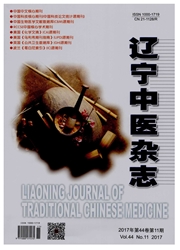

 中文摘要:
中文摘要:
目的:定量定性地试探糖尿病兼证的普遍性和组合复杂性。方法:将460例糖尿病患者按证型出现的多少分成单证,二证组合、三证组合,四证组合、五证组合、六证组合、七证组合、八证组合及九证组合共10组。按统计学处理分析糖尿病兼证的构成。结果:460中出现10种单证共88例占总数的19.13%,其余80.87%以兼证出现。10个单证之间的组合形式有148种形式,且以3~4证兼见的组合最多,(P〈0.05);肾虚兼证以气虚和阴虚为主共占41.10%。结论:示范"数推"复杂疾病证型组合,揭示其内在规律,执简驭繁以准确辨证,分清主次以高效组方。肾虚为本,气阴两虚而为继,随症化裁以为治。
 英文摘要:
英文摘要:
Objective: To quantificationally explore the universality and combination complexity of the diabetic complications.Methods: We divided 460 diabetics into ten groups according the number of everyone′s syndromes and statistically analyzed the constitution of the complications of diabetes.Results: There were altogether 10 single syndromes which presented on 88 patients and accounted for 19.13% of the objects.148 combinations were obtained,among which 3 to 4 syndromes together accounted for the most encountered combinations( P 0.05) ;qi deficiency and yin deficiency were the dominant complications of kidney deficiency in diabetes and accounted for 41.10% of the complications.Conclusion: Statistical analyzing methods are performed to study the syndrome combinations of complex disease and reveal the internal grouping disciplines in order to accurately diagnose and compose formulae.The pathogenesis of diabetes is based on kidney deficiency,which develops along with qi and yin deficiency so modification is necessary to cure the disease.
 同期刊论文项目
同期刊论文项目
 同项目期刊论文
同项目期刊论文
 期刊信息
期刊信息
